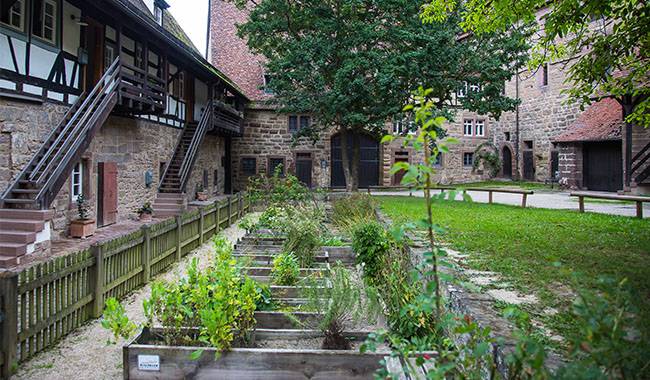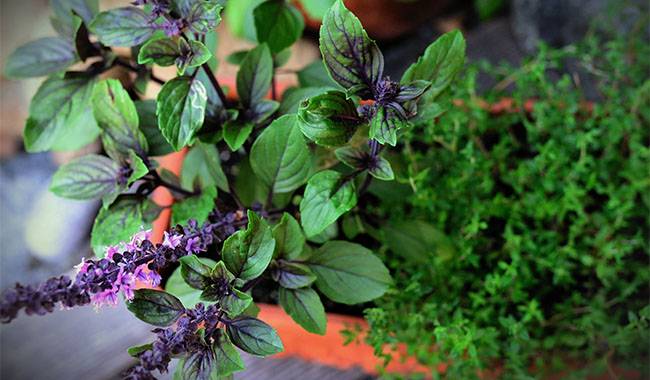
Most gardeners are unhappy with the prospect of growing wild herbal plants in their gardens. Mugwort, chamomile, Solanum, and other “medicinal” herbs are aggressive species that often crowd out their neighbors and do not adhere to strict composition schedules.
Among the precious herbal plants, there are even the famous weeds! However, there is no need to abandon growing medicinal plants in your garden. Despite their reputation as invaders, most herbs simply require a special approach and proper introduction into the garden.
BENEFITS OF GROWING MEDICINAL HERBS IN YOUR GARDEN
There are many advantages to growing your own medicinal and spice plants. In your own garden, it is easy to collect the medicinal ingredients in time, dry and store them properly, and use them at the time of maximum effectiveness.
The control of the soil and the rejection of mineral fertilizers and “chemicals” ensure environmental friendliness and the “purity” of the herbs and spices obtained.
But not everyone decides to establish their own medicinal garden. The main reason is that some varieties of plants have a bad reputation, such as wormwood, which falls into the fertile soil of the site and soon replaces their competitors and spread uncontrollably.
Not all medicinal herbs are like this. Spicy and tea favorites: mint, melissa, marigold, echinacea, lotus, are actively introduced even in flower beds. However, most herbs remain relatively exceptional in pastes.
Medicinal and spice plants are versatile and multifunctional. In addition to medicinal uses, they are also used as spices and ornamental crops. They are perfect candidates for creating natural compositions that create a wild, raw natural effect.
But this plant has another undoubted advantage: they require little care and are hardier, more durable, and less demanding than all their “cultivated” competitors.
Among medicinal plants, there are annuals, biennials, and perennials, plants that are high and low, valued for their inflorescences, leaves, or roots. This incredible diversity allows them to be combined in flower beds and seedbeds in many different arrangements.
The question of creating your own medicinal plant garden is simply a question of the right approach.
Tip!
And think deeply: you need to balance your choices and think carefully to find the ideal way to plant. Introducing medicinal herbs into your garden without any dangerous consequences or setbacks is easier than it seems.
DECIDING ON A PLANTING METHOD
Herbs and medicinal plants can be grown in the open, or as container plants in containers and crates (on balconies, patios, or sitting areas, or even on windowsills inside the house).
When growing as container plants, everything is easy: you don’t have to worry about aggressive herbs, but you won’t always get a good “crop” either. Looking closely at herbs or trying your hand at them is a great alternative to perennials and potted plants, and a great way to compile a collection.
Herbs can be planted in individual pots or old buckets, or in general containers. When deciding to create a portable herb garden, keep in mind that container form planting has two key disadvantages.
- The plants need to be watered regularly, and in the summer, daily.
- The planting itself can take a lot of time, but in the winter, perennial grasses must also be sent indoors in the cooler winter months, and containers underneath the summer house should be cleaned and washed.
A more time-efficient and logical way to introduce herbs into the garden is to plant herbs and medicinal plants into the soil. They can be composed individually (herbs) or planted in a mixture.
A separate herb garden, an herb garden, or a medicinal plant garden is truly decorative and is the highlight of the location. Shapes are arranged in the garden style, with rectangular and circular beds as standard. The borders – fences, thorns and daub, ribbons of plants – are both beautiful and necessary.
The composition of herbs is good for the house, balconies, recreation areas, on the lawn, or as one of the beds in the garden. The additional division into sections and decoration in the form of nameplates will accentuate the style.
Introduce plants with a mixed composition of annuals and perennials, it will be possible to “add” herbs to any garden to the mixed garden, rockery garden, pond shoreline.
Here, you cannot do without a plan. To make a good sketch, you don’t need to have artistic skills: it is enough to specify plants in the usual way and to consider the main criteria for selection and placement
However, in order to select specific species, you need to evaluate some criteria to help understand which parts of the garden and components are most preferred by a particular species.
CHOOSE THE PLANTS YOU NEED
Therapeutic plants have both beneficial and dangerous properties and should not be used “willy-nilly”. A safe choice is to make a list of those herbs that you actively use and spicy herbs that are truly necessary. You can research the ingredients of your favorite herbal teas, spice boxes, or doctor-prescribed therapeutic potlucks and your list are ready!
If the list is too long, be bold and reduce it on the principle that there is a price to be paid. So, Wax Chrysanthemum, St. John’s wort, and willowherb can be gathered on a walk in the woods or meadow, while mint stays on the shelf. If the plants are already easily available or cheap, you may choose other, valuable, and exclusive species and your favorites.
For each species, you will need to write down the time and characteristics of the herb harvest to develop the best harvesting schedule.
Annual herbs not only need to be sown annually but also have their own requirements for conditions and care. They are more suitable for planting in individual beds, potted gardens, or replacing summer flowers as camouflage and temporary fillers. Perennials are long-lasting and reliable, they are suitable for different roles and require space for decades.
In addition, the principle should be to distribute the herbs in a straight, tall, and small manner. Tall and strong plants in the background and lighter plants in the front. In a single bed, it is simple to build up a composition from high species to low species or a combination of different herbs. However, when introducing herbs in other ensembles, they should be chosen according to what makes sense for them.
Tall and majestic Cymbidium, Magnolia, Milk Thistle, Marshmallow, Willowherb, Eleutherococcus will fit next to a fence or in the background by a mixed light panel or pond. Lavender, monarch, catnip, and melon will fill the base of the composition and will add volume to the composition. Thyme, primroses, plantain, and violets are more suitable for alpine plants, rockery plants, and flowerbed plants.
The aggressiveness of the plants is estimated by their ability to form thickets. In marginal hills and landscape groups, grasses can be “free”.
However, if you do not want the grass to extend beyond the border, you should dig a barrier before planting to prevent root growth. In the case of self-seeding and “weed” crops, cut the inflorescence before the seeds begin to mature (tie a transparent cloth around the seeds when collecting them).

LIGHTING IS A VERY HANDY GUIDE WHEN LOOKING FOR LOCATIONS
To find the ideal location for your herbs, you need to look carefully at where plants grow in nature. All medicinal annuals and biennials are sun-loving (photosensitive crops). Perennial plants, on the other hand, fall into two categories.
- forest herbs (Panax ginseng, lily of the valley, marjoram root), which can be found in the semilunar form.
- sun-loving types of grass, prairie, and field grasses (e.g. lisianthus, yarrow, sage, cactus, echinacea).
After dividing the herbs into groups, you can place the sun-worshipping ones in sunny beds and the secluded ones by ponds and in mixed gardens.
PLANTING AND CARE
Medicinal plants need garden conditions close to their natural habitat. Once in overly fertile soil, they tend to “fatten up” and become aggressive.
And they lose their medicinal and spicy taste through the accumulation of green masses, where the concentration of essential oils and valuable substances is greatly reduced. For example, in the fertile soil of flower beds, the medicinal properties of senna and catnip are reduced dozens of times.
If in nature the plant grows in dry, poor soil, it does not need anything else in the garden. Fertilizer in preparation for planting is best applied only to plants that you really like.
For herbs and medicinal plants, it is worth using organic rather than mineral fertilizers, and remember that anything added to the soil before or during planting can have an impact on the goodness and sustainability of the harvest.
Many herbs and pungent herbs require little care. But not all of the garden’s “wild” guests can do without water. It’s worth picking out the plants that need extra watering during a drought and weighing your care options.
For components that can be planted and forgotten, you should use drought-tolerant grasses such as cactus, mugwort, mugwort, and echinacea. Peonies, bluebells, primroses, or violets are best chosen wisely and planted in “proper” moisture-loving company. Or choose low ground, swampy areas, and places near bodies of water where there is already moist soil.







